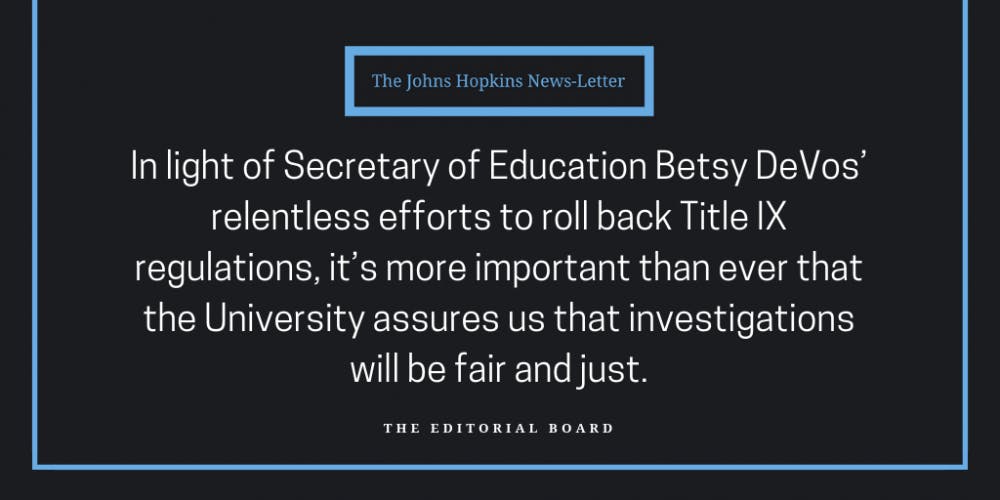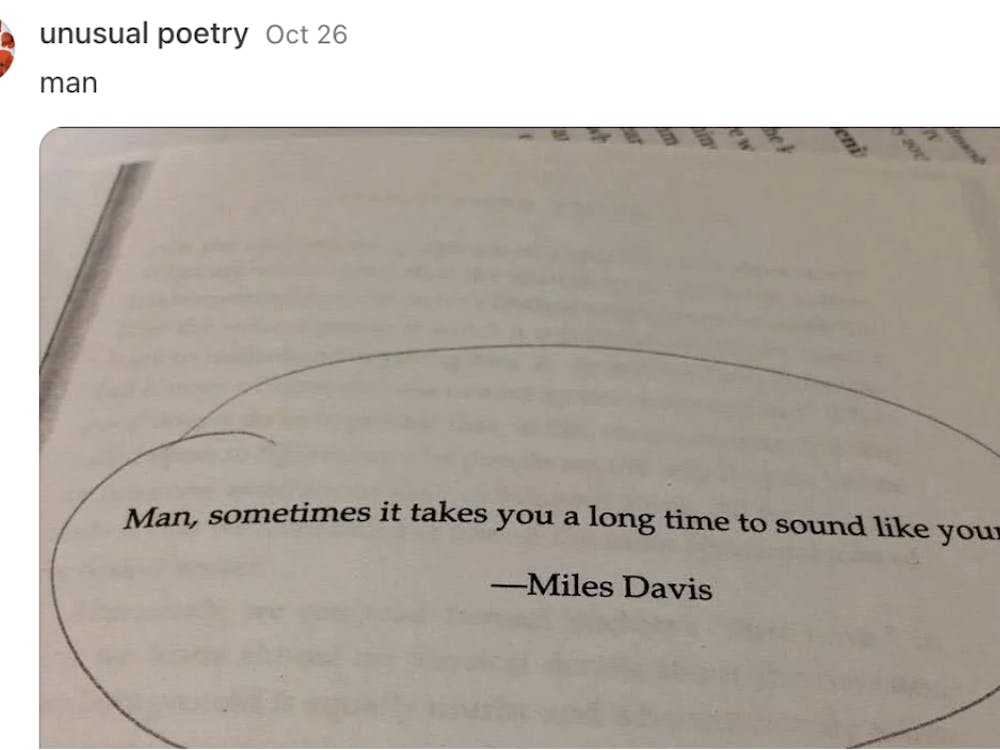In an effort to be more transparent about how it handles sexual misconduct at Hopkins, the Office of Institutional Equity (OIE) published its first annual report on Tuesday.
The report contains data on how OIE responds to reports of sexual misconduct, discrimination and harassment and the processes through which the Office investigates these reports. The graphs and statistics outline “the volume, type, resolution and timeliness of reports of discrimination, harassment or sexual misconduct.”
We commend the University for taking the initiative to create and release this report. We hope this report is a reflection of the University’s ongoing commitment to increasing transparency and improving its resources. This report provides important information about our University and allows us to see a clearer picture of what reporting sexual misconduct and harassment looks like at Hopkins. We’re also happy to see that the University is soliciting feedback on how to improve and revise its General Anti-Harassment Policy and to develop a new Statement on Diversity, Equity and Inclusion.
However, the mire of data related to sexual misconduct in the OIE report leaves us with many questions. Numbers are informative, but what can we do with these statistics? What can we do to address the problems they illustrate?
The statistics show that there has been an almost doubling in the number of sexual misconduct reports, from 153 reports in 2016 to 275 reports in 2017. OIE attributes the increase in reports to “greater awareness of OIE’s work,” “university education and outreach efforts” and “decreasing societal stigma around reporting sexual misconduct.”
Even if OIE believes that survivors have “greater awareness of OIE’s work,” the fact of the matter is that a majority of the student body is not familiar with OIE or would want to report sexual misconduct to it. In 2016, the University released “It’s On Us Hopkins,” a Sexual Violence Climate Survey that provided information about unwanted sexual behavior on campus. It showed that 79 percent of students said that they were “not at all familiar” with OIE and only 16 percent of undergraduates said that they would use OIE as a resource if they experienced unwanted sexual behavior in the future.
Even if survivors are aware of OIE’s resources, they may remain reluctant to go through the process. While the number of reports have increased, we know sexual misconduct is still highly underreported. According to the National Sexual Violence Resource Center, over 90 percent of sexual assault survivors on college campuses do not report.
It’s likely that it’s not just stigma or lack of awareness that stops survivors from coming forward. These complainants might also choose not to report because of the emotional labor and time commitment involved in formal investigations. Although OIE closes more than half of its cases in four months or less, cases that are closed after a formal investigation often take much longer.
Following a formal investigation, over 50 percent of those cases took eight months or longer to investigate (241-300 days and 301-365 days), and 26 percent of those cases took up to a full year.
We recognize that conducting a thorough and full investigation is a time-consuming process. That being said, it is worth asking why these investigations take so long and if there is anything we can do to make the process more efficient.
We propose that there should be an option for survivors of sexual misconduct to report an incident for the purpose of collecting information, not for opening a case or investigation. We acknowledge that there are confidential resources that survivors can go to on campus, but gathering statistics that accurately capture the scope of sexual misconduct could help OIE going forward. We believe that if survivors had the option of anonymously reporting that they had these experiences, then we would have more accurate data on the scope of sexual misconduct at Hopkins.
Last semester, the University attempted something similar by sending out the 2018 Anonymous Climate Survey. We hope that the University will make the survey results public soon and use that survey to create a safer environment at Hopkins.
In addition to continuing to make information available to the public, we also believe the University should do more to increase OIE’s staff. Currently, OIE has 13 full-time employees serving approximately 50,000 people across our nine campuses. It’s true that this is an improvement: in 2015, we only had seven. It’s also true that this means we’re more on par with many of our peer institutions. For example, Brown University has 20 people on its Title IX Advisory Board. Duke University has 16 staff members in its Office for Institutional Equity and Northwestern University’s Office of Equity has 12 staff members.
In an email, OIE informed The News-Letter that it is in the process of hiring two additional Equity Compliance Investigators (ECI) in the next few months. All cases are assigned to an ECI and OIE currently employs five ECIs.
We are heartened to hear that OIE is in the process of hiring more Investigators. We believe that more staff members would ensure better coordination and consistency in the Office. Last year, when OIE had 12 full-time employees, The News-Letter published a feature detailing the stories of eight survivors of sexual misconduct and how OIE has handled their cases. The accounts show that all too often, OIE has been inconsistent, unresponsive and insensitive to the emotional needs of survivors.
We also want to examine what we are doing to protect non-affiliate complainants who file reports. What are we doing to hold non-affiliate respondents accountable if they engage in misconduct? The report shows that of 410 reports combining sexual misconduct, discrimination and harassment, 75 of the reports involved a situation where the University had no authority over the respondent.
Even though OIE typically does not have jurisdiction to pursue investigations if a respondent is unknown and/or unaffiliated, the Office can still take action. For example, OIE explained to The News-Letter that it can issue campus bans, work with Campus Safety and Security and provide resources for the complainant. We encourage the University to continue to ensure that its campuses are safe for students, faculty, staff and visitors.
In the end, the report leaves us with more questions than answers. And we need more answers. In light of Secretary of Education Betsy DeVos’ relentless efforts to roll back Title IX regulations, it’s more important than ever that the University assures us that investigations will be fair and just. We hope that this report is the first of many steps that OIE will take to improve its transparency and effectiveness.
Clarification: On the Office of Institutional Equity website, individuals can anonymously report sexual misconduct by omitting personal information from the Sexual Assault Complaint Form.





